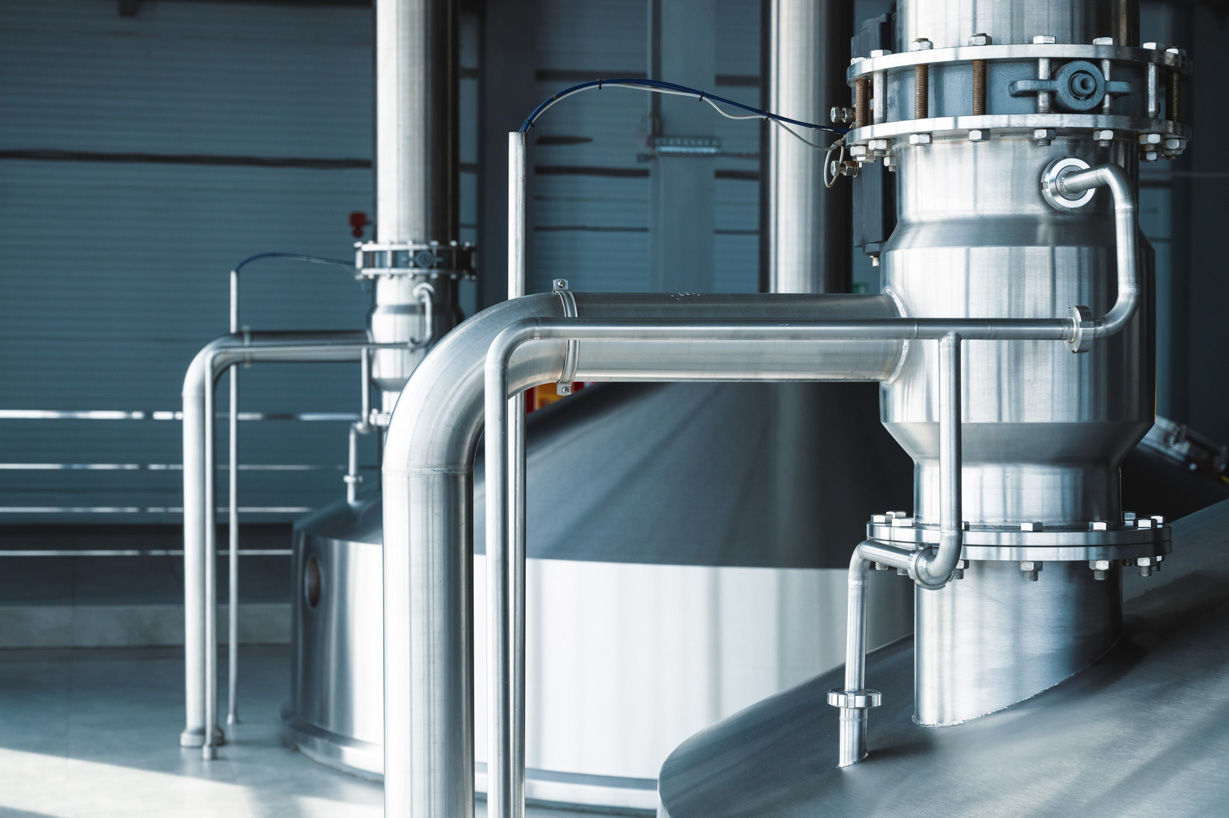August 7, 2025
12 Game-Changing Ways Digital Twins Can Boost the Chemical Industry

The chemical industry is undergoing a profound transformation, fueled by the adoption of digital twin technology used to create virtual replicas of physical assets, processes, or even entire plants. By merging physical and digital worlds, digital twins offer a range of benefits, from real-time monitoring to predictive maintenance. The journey toward digitalisation is certainly not without its challenges. In this article, we explore the ways digital twin technology can address key concerns facing the chemical industry as it embraces digital.
1. The Data Dilemma
One of the foremost concerns in the chemical industry as it moves toward digitalisation is data security and privacy. The industry handles sensitive information such as proprietary chemical formulations, manufacturing processes, and intellectual property (IP). The risk of cyberattacks or data breaches can have severe consequences, including financial losses and reputational damage.
Cyber incidents account for the top global risk in 2025, and AI has joined the top 10 global risks as a new entrant. (Source: Allianz Risk Barometer 2025 - Cyber incidents | Allianz Commercial)
Digital twin technology mitigates these risks by enabling the analysis and testing of data in a virtual environment without the need to expose sensitive data to external parties. Chemical manufacturers can create simulations of their processes using digital twins, allowing engineers to test different scenarios and optimise performance without compromising security.
 Example: A chemical plant can use a digital twin of its distillation column to simulate changes in temperature or pressure, ensuring optimal performance without transmitting sensitive process data to third parties. This protects proprietary information from potential breaches.
Example: A chemical plant can use a digital twin of its distillation column to simulate changes in temperature or pressure, ensuring optimal performance without transmitting sensitive process data to third parties. This protects proprietary information from potential breaches.
2. High Initial Investment Costs
While digital technologies offer significant long-term benefits, the initial investment costs can be a barrier, especially for smaller chemical companies. The cost of implementing new systems, such as predictive maintenance tools, IoT sensors, and advanced process control (APC) systems, can be prohibitive.
Digital twins can help offset these costs by providing a platform to test new technologies and optimise existing processes before making substantial physical investments. Virtual models allow engineers to simulate the impact of changes, helping companies make informed decisions without committing to costly upgrades – and, of course, resulting in significant efficiency gains and reduced operational downtime. Companies like Shell monitor over 15,000 pieces of equipment across refining and chemicals facilities with proven results.
Example: Before upgrading a reaction vessel, a chemical company can use a digital twin to simulate the effects of different operational conditions. This allows the company to optimize performance and identify the most cost-effective solutions without making large, upfront investments.
3. Integration with Legacy Systems
Many chemical plants still rely on legacy systems such as Distributed Control Systems (DCS) and Programmable Logic Controllers (PLC) for managing operations. Integrating these older systems with newer digital technologies can be complex and expensive.
A study conducted in February 2022 by cybersecurity firm Bridewell Consulting revealed that 70% of chemical companies in the U.K. were using operational technology (OT) systems aged between 6 and 20 years, with 30% operating systems specifically between 11 and 20 years old.
Digital twin technology can bridge the gap between legacy systems and modern tools by creating a virtual representation of the plant. This allows data from older systems to be integrated into real-time simulations, offering a unified digital environment without the need for extensive overhauls of existing infrastructure.
Example: A chemical plant using an older PLC-controlled reactor can create a digital twin that integrates real-time data from IoT sensors, improving monitoring and control without the need to replace the entire control system.
4. Skills Gap and Workforce Resistance
As digitalization accelerates, many chemical companies face a skills gap and workforce resistance to new technologies. Plant operators who are accustomed to manual control systems may be reluctant to embrace more automated or AI-driven tools.
Digital twins offer a solution by providing a training platform where operators can learn how new technologies will impact operations without risk. These virtual models allow workers to experiment with different process scenarios and gain hands-on experience with the latest tools in a safe, controlled environment.
Example: Operators can use a digital twin of a polymerisation reactor to practice troubleshooting and fine-tuning process parameters before applying these changes in the physical plant. This builds confidence and familiarity with new technologies.
5. Regulatory Compliance
The chemical industry is highly regulated, with strict requirements for safety, environmental impact, and product quality. As companies adopt digital technologies, ensuring regulatory compliance becomes more complex.
Digital twins can help chemical manufacturers stay compliant by continuously monitoring plant operations in real time. These virtual replicas can simulate various operational scenarios, ensuring that plants remain within regulatory limits and that any deviations are flagged early.
Example: A digital twin of a chemical manufacturing facility can simulate emissions from production processes and ensure compliance with environmental regulations such as REACH and EPA standards. If emissions exceed acceptable thresholds, the system can alert operators to take corrective action before violating regulations.
6. Interoperability of Systems
In modern chemical plants, numerous systems—from Manufacturing Execution Systems (MES) to Enterprise Resource Planning (ERP)—must work together to optimise operations. Ensuring interoperability between these systems is a significant challenge.
Digital twins provide a unified platform for integrating data from disparate systems, allowing plant managers to view real-time data from multiple sources in one location. Integration benefits include simplified decision-making, reduced errors, and overall improvements in plant efficiency.
Example: A chemical plant can integrate its ERP system, which manages inventory and procurement, with its MES system, which tracks production in real time. A digital twin of the plant can synchronise data from both systems, ensuring accurate, up-to-date information is always available.
Beyond interoperability lies contextualization, adding related information or context to data, making that data easier to understand and more useful. This involves enriching raw data with additional details, such as related events, timestamps, locations, or external factors that influence the data, structuring the relationships and knowledge graph to add value by making data more easily searchable and accessible.
7. Supply Chain Disruptions
Global supply chains are complex, and any disruption—whether due to logistics issues, weather conditions, or supplier delays—can significantly impact plant operations.
Digital twins can optimise supply chain management by simulating the movement of raw materials and finished products in real time. By predicting potential disruptions, digital twins help companies take proactive measures to mitigate risks and ensure smooth operations.
Example: A digital twin of a chemical plant's supply chain can monitor the movement of critical raw materials like benzene or ethylene. If a supplier faces delays or transportation disruptions, the digital twin can suggest alternative suppliers or adjust production schedules to avoid downtime.
8. Change Management
Implementing digital tools often requires significant organisational change. Without proper change management, employees may resist adopting new technologies, slowing down digital transformation efforts.
Digital twins can facilitate change management by providing a safe space for testing new processes or equipment configurations before they are implemented in the physical plant. This reduces the perceived risk of change and helps employees understand the potential benefits.
Example: Before installing new heat exchangers in a plant, a digital twin can simulate their impact on energy consumption and process efficiency. This allows operators to visualise the benefits of the change, reducing resistance, and ensuring a smoother transition.
9. Data Quality and Accuracy
Data accuracy is critical in the chemical industry. Inaccurate data can lead to poor decision-making, process inefficiencies, and even safety hazards.
Digital twins continuously collect data from sensors and other digital tools, ensuring that the data is accurate and up-to-date. By providing a virtual model of the plant, digital twins also help identify discrepancies between the physical plant and its digital representation, allowing operators to correct data issues in real time.
Example: A digital twin of a centrifugal pump in a chemical separation process can monitor temperature, pressure, and vibration data. If there’s a mismatch between the digital model and the physical pump, the system alerts operators to potential sensor errors, ensuring data accuracy.
10. Scalability
As chemical plants grow or expand, they need digital systems that can handle increased data loads and more complex operations. Scalability is essential to accommodate future growth.
Digital twins are inherently scalable because as production needs evolve, digital models can be expanded to include new equipment or processes, ensuring that the digital framework grows alongside the physical plant.
Example: As a chemical plant adds a new distillation column, the digital twin can be updated to include the new equipment. This allows operators to simulate the impact of the new addition on the overall plant’s performance and make data-driven decisions about optimising the new system.
11. Maintenance and Continuous Updates
Digital twin technology can also improve maintenance practices by providing real-time monitoring of plant equipment. Predictive maintenance, enabled by digital twins, can detect early signs of wear and tear, allowing companies to perform maintenance before costly breakdowns occur.
Scheduled turnarounds occur once every few years. According to industry research, the average duration of a turnaround is 25 days of downtime costing USD $15 MM or more. Improving STO events can yield schedule and cost improvements by 30%, which means that a major chemicals plant could be saving up to USD $3 MM with just the use case of turnarounds.
In chemical manufacturing, where precision, safety, and efficiency are paramount, Agentic AI agents can leverage Digital Twins to monitor process conditions, predict equipment failures, and suggest operational adjustments with minimal human intervention. LLMs add a layer of interpretability and interaction, enabling natural language interfaces for engineers and operators to query the system, receive contextual insights, and even generate compliance reports. This fusion of technologies holds the potential to dramatically reduce downtime, enhance sustainability, and accelerate innovation across R&D and production operations in the chemicals sector.
 Example: A digital twin of a centrifugal compressor in a chemical plant can monitor vibrations and temperature. If the system detects abnormal behaviour, it can predict when maintenance will be needed, allowing the company to schedule downtime proactively and avoid unexpected failures.
Example: A digital twin of a centrifugal compressor in a chemical plant can monitor vibrations and temperature. If the system detects abnormal behaviour, it can predict when maintenance will be needed, allowing the company to schedule downtime proactively and avoid unexpected failures.
12. Agentic AI and LLM enabled Digital Twins
The integration of Agentic AI and large language models (LLMs) with Digital Twin technology is revolutionising the chemicals industry even further by enabling intelligent, autonomous systems that can reason, plan, and act in dynamic environments. Digital Twins—virtual replicas of physical assets, processes, or systems—provide a real-time, data-rich foundation upon which LLMs can interpret complex scenarios and drive informed decision-making. When combined with Agentic AI, these systems are not just reactive but proactive, capable of simulating outcomes, optimising production workflows, and autonomously managing supply chain disruptions or maintenance schedules.
Conclusion
From improving data security and enabling regulatory compliance to enhancing operational efficiency and reducing costs, digital twins provide a powerful tool for optimising plant performance. As the chemical industry continues to embrace digitalisation, digital twin technology plays a central role in ensuring that companies can overcome their most pressing concerns and unlock the full potential of their operations.
Image licenses/credits:
Fig. 1 - Distillation Column modeled on CHEMCAD" by Reedmiller22 is licensed under CC BY-SA 4.0.
Fig. 2 - "Centrifugal Pump" by MokeryJ. Vectorized by Magasjukur2 is licensed under CC BY-SA 3.0.
Author

Jeff Dietrich
Senior Industry Content Writer, Kongsberg Digital
Related news

14 November 2025
Industrial intelligence: Connecting the physical and digital for the future of work

28 October 2025
SiteCom: 20 years of development, built for what’s next

24 October 2025
From isolated systems to connected workers

20 October 2025
Kongsberg Digital at ADIPEC 2025: Unveiling the Next Era of Energy Innovation